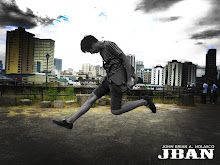Fort Santiago.
One of the oldest fortifications in Manila. built in 1571, on the site of the native settlement of Raja Soliman. First fort was a palisaded structure of logs and earth. Destroyed in the Limahong attack in 1574.
Stone fort built between 1589 and 1592. Damaged in the 1645 earthquake.
Repaired and strengthened from 1658 to 1663.
Became the headquarters of the British occupation army from 1762 to 1764. Repaired and renovated in 1778.
Former headquarters of the Philippine division of the U.S.Army. Occupied by the Japanese military in 1942 where hundreds of civilians and guerillas were imprisoned, tortured and executed.
Destroyed in the Battle of Manila in 1945.
Used as a depot of the U.S. Transportation Corps before turnover to the Philippine Government in 1946. Declared Shrine of Freedom in 1950. Restoration and maintainance of the fort began in 1951 under the National park Development Committee. management was turned over to the Intramuros Adminitration in 1992.
The gate of Fort Santiago.The Cannon in fort Santiago.
View from the wall.
The gate and moat seen from the wall.
Fort Santiago Rizal Shrine.
The statue at the end of the lawn, which is called the Plaza Armas, is of Dr Jose Rizal. It is a shrine of remembrance and stands on the site where he was imprisoned.
On the right of the photo is the Dulang Rajah Soliman, which is now used as a theatre. The left hand side of this building is the now chapel, then cell of Dr Jose Rizal, where he spent his last night on earth.
The
The statue at the end of the lawn, which is called the Plaza Armas, is of Dr Jose Rizal. It is a shrine of remembrance and stands on the site where he was imprisoned.
On the right of the photo is the Dulang Rajah Soliman, which is now used as a theatre. The left hand side of this building is the now chapel, then cell of Dr Jose Rizal, where he spent his last night on earth.
These footprints were brass covered, but I guess time has seen them be lifted.
The footprints show the path taken by Jose Rizal from his dungeon in Fort Santiago to his final execution place at Bagumbayan in Rizal Park.
The dungeons used to be storage vaults and powder magazine of the Baluarte de Santa Barbara. Because of dampness caused by the humid weather and the nearness of the vaults to the Pasig River, the Spaniards decided to build a new powder magazine on top of the baluarte in 1715.
The vaults were converted into prison cells and storerooms when the Casa del Castellano (Fort Commander’s residence) was built in 1718.














Walang komento:
Mag-post ng isang Komento